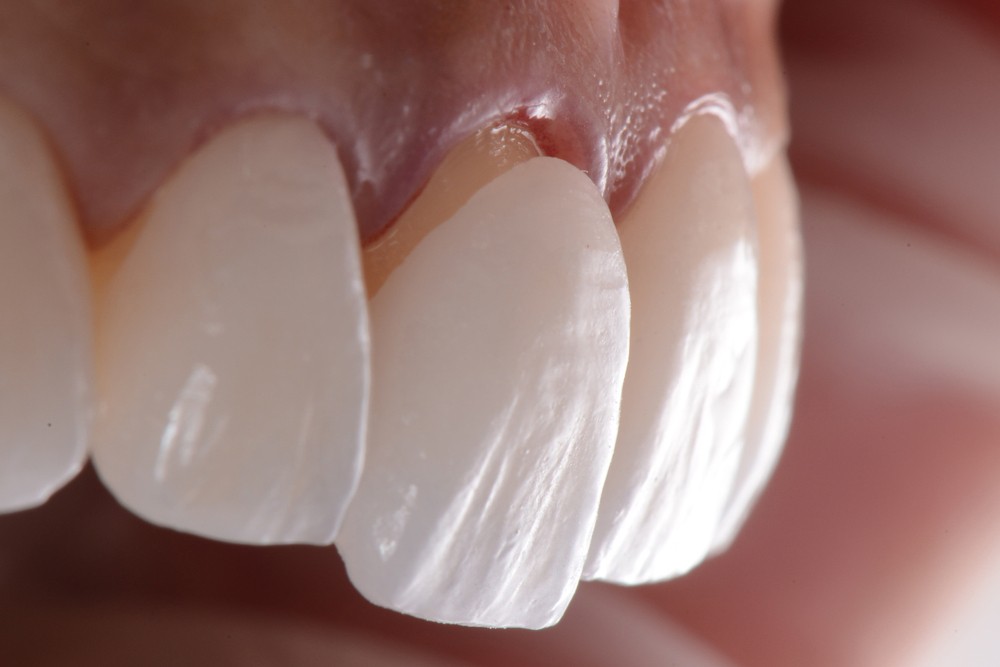
Dental Care
Teeth Reshaping for Dental Veneers: Necessary or Not?
When we aspire to display a radiant and confident smile, dental veneers emerge as a first-choice aesthetic and durable solution. However, a major question persists: is it always necessary to have our teeth shaved before receiving dental veneers? In this article, we will explore in-depth the different facets of this attractive question and provide you with crucial information to enlighten your decision. Moreover, we will dive into the available types of dental veneers, highlighting the importance of shaving depending on the selected material.
Tooth Shaving: An Essential Prelude to Dental Veneers

An Express Analysis of Dental Veneers
Dental veneers, these thin custom shells made from dental materials, are designed to cover the visible part of teeth. They prove to be the panacea for correcting a multitude of aesthetic aspects such as discoloration, positioning defects, and morphological imperfections. Offering a convincing alternative to more invasive methods such as dental crowns, veneers propose an effective way to display a resplendent smile.
Tooth Shaving: A Required Step?
Tooth shaving, also known as dental preparation, emerges as a step often recommended before the placement of dental veneers. This phase consists of removing a thin layer of dental enamel to create the necessary space and ensure an optimal fit of the veneer. This process, usually performed under local anesthesia, is distinguished by its safe and painless nature.
Composite Veneer: A Shaveless Option
The world of aesthetic dentistry has undergone significant evolutions, giving rise to a variety of dental veneers. Composite veneers, made of dental resins, represent a popular alternative that abolishes the need for tooth shaving. These veneers are applied directly to the teeth and carefully modeled to achieve the desired shape and aesthetics. However, it should be noted that composite veneers may display lower durability compared to other types, requiring more frequent replacements.
Zirconia Veneer: The Subtle Balance between Aesthetics and Conservation
Zirconia veneers have gained popularity thanks to their unprecedented combination of resistance, aesthetics, and durability. Formed from high-quality ceramic, these veneers offer a natural finish while maintaining their structural integrity over the long term. Although shaving may remain essential, it is usually a little more thorough than for other types of veneers.
eMax Veneer: Gentle Preparation
Made from a reinforced ceramic, eMax veneers stand out for their remarkable aesthetics and superior quality durability. In many situations, only light preparation is necessary for the installation of eMax veneers. This approach preserves the integrity of the teeth while reconciling the desired aesthetic goal.
Conclusion
In summary, the question of whether tooth shaving is required before the placement of dental veneers rests on multiple variables, including the type of veneer considered and the dental condition unique to each individual. Composite veneers offer a shaveless alternative, while zirconia and eMax veneers require shaving for the best results.
Recap
To summarize the key elements, here is a concise summary:
Composite Veneers: No need for shaving, but they may have lower durability over the long term.
Zirconia Veneers: More extensive shaving may be required, but they offer a combination of high durability and aesthetics.
eMax Veneers: Light preparation is often sufficient, ensuring superior quality both aesthetically and in durability.
Before making any decisions, it is essential to consult a professional in aesthetic dentistry or contact us for a consultation with our specialists. We will be able to evaluate your unique situation and guide you towards the option that best suits your needs.
Sep 6, 2023
Read more
A smile for always —
Don't miss anything
Join our community of dental care specialists through our monthly newsletter.

Dental Care
Teeth Reshaping for Dental Veneers: Necessary or Not?
When we aspire to display a radiant and confident smile, dental veneers emerge as a first-choice aesthetic and durable solution. However, a major question persists: is it always necessary to have our teeth shaved before receiving dental veneers? In this article, we will explore in-depth the different facets of this attractive question and provide you with crucial information to enlighten your decision. Moreover, we will dive into the available types of dental veneers, highlighting the importance of shaving depending on the selected material.
Tooth Shaving: An Essential Prelude to Dental Veneers

An Express Analysis of Dental Veneers
Dental veneers, these thin custom shells made from dental materials, are designed to cover the visible part of teeth. They prove to be the panacea for correcting a multitude of aesthetic aspects such as discoloration, positioning defects, and morphological imperfections. Offering a convincing alternative to more invasive methods such as dental crowns, veneers propose an effective way to display a resplendent smile.
Tooth Shaving: A Required Step?
Tooth shaving, also known as dental preparation, emerges as a step often recommended before the placement of dental veneers. This phase consists of removing a thin layer of dental enamel to create the necessary space and ensure an optimal fit of the veneer. This process, usually performed under local anesthesia, is distinguished by its safe and painless nature.
Composite Veneer: A Shaveless Option
The world of aesthetic dentistry has undergone significant evolutions, giving rise to a variety of dental veneers. Composite veneers, made of dental resins, represent a popular alternative that abolishes the need for tooth shaving. These veneers are applied directly to the teeth and carefully modeled to achieve the desired shape and aesthetics. However, it should be noted that composite veneers may display lower durability compared to other types, requiring more frequent replacements.
Zirconia Veneer: The Subtle Balance between Aesthetics and Conservation
Zirconia veneers have gained popularity thanks to their unprecedented combination of resistance, aesthetics, and durability. Formed from high-quality ceramic, these veneers offer a natural finish while maintaining their structural integrity over the long term. Although shaving may remain essential, it is usually a little more thorough than for other types of veneers.
eMax Veneer: Gentle Preparation
Made from a reinforced ceramic, eMax veneers stand out for their remarkable aesthetics and superior quality durability. In many situations, only light preparation is necessary for the installation of eMax veneers. This approach preserves the integrity of the teeth while reconciling the desired aesthetic goal.
Conclusion
In summary, the question of whether tooth shaving is required before the placement of dental veneers rests on multiple variables, including the type of veneer considered and the dental condition unique to each individual. Composite veneers offer a shaveless alternative, while zirconia and eMax veneers require shaving for the best results.
Recap
To summarize the key elements, here is a concise summary:
Composite Veneers: No need for shaving, but they may have lower durability over the long term.
Zirconia Veneers: More extensive shaving may be required, but they offer a combination of high durability and aesthetics.
eMax Veneers: Light preparation is often sufficient, ensuring superior quality both aesthetically and in durability.
Before making any decisions, it is essential to consult a professional in aesthetic dentistry or contact us for a consultation with our specialists. We will be able to evaluate your unique situation and guide you towards the option that best suits your needs.
Sep 6, 2023
Read more
A smile for always —
Don't miss anything
Join our community of dental care specialists through our monthly newsletter.

Dental Care
Teeth Reshaping for Dental Veneers: Necessary or Not?
When we aspire to display a radiant and confident smile, dental veneers emerge as a first-choice aesthetic and durable solution. However, a major question persists: is it always necessary to have our teeth shaved before receiving dental veneers? In this article, we will explore in-depth the different facets of this attractive question and provide you with crucial information to enlighten your decision. Moreover, we will dive into the available types of dental veneers, highlighting the importance of shaving depending on the selected material.
Tooth Shaving: An Essential Prelude to Dental Veneers

An Express Analysis of Dental Veneers
Dental veneers, these thin custom shells made from dental materials, are designed to cover the visible part of teeth. They prove to be the panacea for correcting a multitude of aesthetic aspects such as discoloration, positioning defects, and morphological imperfections. Offering a convincing alternative to more invasive methods such as dental crowns, veneers propose an effective way to display a resplendent smile.
Tooth Shaving: A Required Step?
Tooth shaving, also known as dental preparation, emerges as a step often recommended before the placement of dental veneers. This phase consists of removing a thin layer of dental enamel to create the necessary space and ensure an optimal fit of the veneer. This process, usually performed under local anesthesia, is distinguished by its safe and painless nature.
Composite Veneer: A Shaveless Option
The world of aesthetic dentistry has undergone significant evolutions, giving rise to a variety of dental veneers. Composite veneers, made of dental resins, represent a popular alternative that abolishes the need for tooth shaving. These veneers are applied directly to the teeth and carefully modeled to achieve the desired shape and aesthetics. However, it should be noted that composite veneers may display lower durability compared to other types, requiring more frequent replacements.
Zirconia Veneer: The Subtle Balance between Aesthetics and Conservation
Zirconia veneers have gained popularity thanks to their unprecedented combination of resistance, aesthetics, and durability. Formed from high-quality ceramic, these veneers offer a natural finish while maintaining their structural integrity over the long term. Although shaving may remain essential, it is usually a little more thorough than for other types of veneers.
eMax Veneer: Gentle Preparation
Made from a reinforced ceramic, eMax veneers stand out for their remarkable aesthetics and superior quality durability. In many situations, only light preparation is necessary for the installation of eMax veneers. This approach preserves the integrity of the teeth while reconciling the desired aesthetic goal.
Conclusion
In summary, the question of whether tooth shaving is required before the placement of dental veneers rests on multiple variables, including the type of veneer considered and the dental condition unique to each individual. Composite veneers offer a shaveless alternative, while zirconia and eMax veneers require shaving for the best results.
Recap
To summarize the key elements, here is a concise summary:
Composite Veneers: No need for shaving, but they may have lower durability over the long term.
Zirconia Veneers: More extensive shaving may be required, but they offer a combination of high durability and aesthetics.
eMax Veneers: Light preparation is often sufficient, ensuring superior quality both aesthetically and in durability.
Before making any decisions, it is essential to consult a professional in aesthetic dentistry or contact us for a consultation with our specialists. We will be able to evaluate your unique situation and guide you towards the option that best suits your needs.
Sep 6, 2023
Read more
A smile for always —
Don't miss anything
Join our community of dental care specialists through our monthly newsletter.


